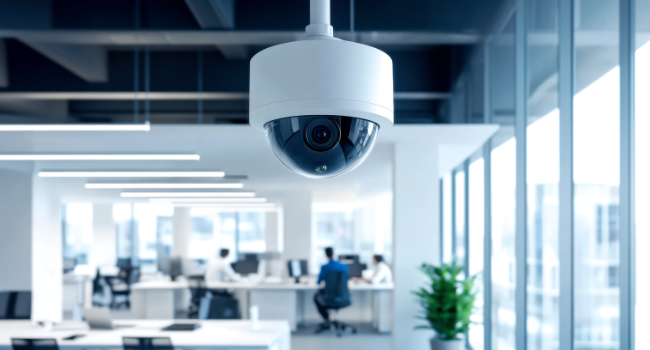
Video Surveillance Trends to Watch
- By Aaron Saks
- Jul 02, 2025
With more organizations adding newer capabilities to their surveillance systems, it’s always important to remember the “basics” of system configuration and deployment, as well as the topline benefits of continually emerging technologies like AI and the cloud.
Any surveillance application always begins with cybersecurity. However, some of the biggest cybersecurity challenges still include overcoming the mentality of “good enough” in a system installation. Too often, considerations like cybersecurity are still left as an afterthought. It’s important for everyone involved in an installation – manufacturers, integrators, consultants – to collaborate closely to understand the capabilities of all products and devices and how they work together.
An integrator may not be completely familiar with a product’s cybersecurity features and, as a result, they may not necessarily be optimizing that model’s capabilities or applying best practices for that brand. That's why it's important to work with a manufacturer that is a trusted advisor to learn what their cyber practices are.
A common gap in understanding when it comes cybersecurity occurs when there is an assumption that a product’s cybersecurity will prevent any intrusion, and no further steps need to be taken. Another important issue is insider threats. You might have the most secure firewall or the most secure cameras or devices, but a malicious virus or malware may already be in your network. Too often, people assume having a strong firewall is enough. That's why taking a holistic approach is so important -- installing antivirus and anti-malware software on desktops, establishing firewall rules between VLANs, and separating several types of devices on a network.
Getting Smarter About Artificial Intelligence
With security and surveillance devices now increasingly being tasked to do more than just “monitor and protect,” comprehensive, AI-powered intelligent technologies are becoming total business solutions. With the combination of AI and intelligent analytics, security professionals are better equipped to design and build safer and more efficient surveillance environments.
The continued evolution of new cameras combining AI with on-board audio and video analytics is resulting in highly accurate object detection and classification. In addition to fewer false alarms, customers can also receive actionable data that can drive intelligent monitoring to enhance operational efficiency and generate data-driven business insights.
The past few years have seen companies throughout the security and surveillance industry expand their use of AI, doing more than improving camera imaging performance, taking data out of legacy silos so that different systems can make use of this data.
One example is visual verification of access control alarm systems. Using AI, a rule could be written to ignore an alert if a person is not seen at a certain doorway. Or an operator verifying the alert can quickly look for people in the forensic search instead of having to manually review hours of footage. They can then search for those attributes (clothing color, etc.) to see if there have been repeated attempts.
We will see additional types of devices and a fusion of AI to bring more intelligence to surveillance cameras and systems. Cameras or audio sensors are being AI enabled to make them more accurately detect certain scenarios based on the monitored audio alone, while ignoring false positives.
Cloud benefits
With cloud-based systems, users can eliminate many up-front costs. They don't need to buy and maintain massive servers and storage space. Often, systems with high camera counts or long required retention times have high storage and maintenance costs. Hard drives have limited lifespans, servers need updates, licensing, reboots, and antivirus software. With cloud-based systems, in addition to eliminating those types of initial costs, you're also shifting from capital expenditures to operational expenses.
The cloud is flexible, elastic and scales to your needs and resources. Users can have a cloud-based video system up and running quickly. Also, with the growing demand for video retention, which is a requirement in some markets, since cloud recording is elastic, it only requires a few clicks to extend storage retention. You don't need to go on site and change out hard drives. Small businesses may also be attracted to using the cloud on an “as-a-service” basis, creating customized security network infrastructures enabling flexibility, efficiency, lower unit cost and scalability – all while being simple enough for users to manage themselves. They will embrace the ability to easily scale bandwidth up or down, or for certain time periods, for example if their business is seasonal, they can plan for busier times of the year.
Many small businesses can take a hybrid cloud approach. A hybrid approach allows you to have full on-site video recording capability combined with a full cloud user interface with all the necessary features and functionality without tying up network bandwidth. If you don't need to send all your data to the cloud all the time, then hybrid gives you the best of both worlds.
Once a cloud system is up and running, users can have full access to their system from any device from anywhere. Cloud removes the barrier of physical access or needing to be onsite only versus the flexibility of being offsite. Once the data egresses and is ingested to the cloud, it's the same ease of access from anywhere.